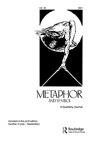抑郁症的隐喻。博客中关于抑郁症患者生活的第一人称描述研究
IF 3.3
3区 文学
0 LANGUAGE & LINGUISTICS
引用次数: 18
摘要
本文分析了23篇由重度抑郁症患者用加泰罗尼亚语撰写的博客中抑郁症的概念隐喻。它的主要目的是比较,以检查在以前的研究中发现的隐喻是否也被用于一种新的流派和一种新语言。它们的使用得到了证实,从而加强了隐喻的相关性及其概念(即非语言依赖性)性质。此外,该研究通过一组以前未被证实的隐喻拓宽了抑郁症生活的概念化范围,这些隐喻大多与社会、交际和医学因素有关。研究结果表明,抑郁症隐喻话语的一个关键部分所特有的遏制和约束不仅是由障碍本身施加的,而且是由背景因素(如污名、缺乏沟通或被视为压抑力量的医疗实践)施加的,这些因素会对抑郁症患者的生活产生重大影响。他们还认为,博客作为一种类型的本质使这些人能够更准确地描述自己的状况,从而更全面地描述抑郁症生活的隐喻,并可能赋予他们权力。本文章由计算机程序翻译,如有差异,请以英文原文为准。
Metaphors of Depression. Studying First Person Accounts of Life with Depression Published in Blogs
ABSTRACT This work analyzes the conceptual metaphors of depression in a corpus of 23 blogs written in Catalan by people suffering major depressive disorder. Its main aim was comparative, in order to check whether metaphors detected in previous studies were also used in a new genre and a new language. Their use was confirmed, thus reinforcing the metaphors’ relevance and their conceptual (i.e. non language-dependent) nature. Furthermore, the study broadens the scope of the conceptualization of life with depression with a set of metaphors not attested before, mostly related to social, communicative and medical factors. The results suggest that the containment and constraint that characterize a crucial part of the metaphorical discourse of depression are not only imposed by the disorder itself, but also by contextual factors (such as stigma, lack of communication, or the medical practice perceived as a repressive power) that can have a significant impact on the lives people with depression lead. They also suggest that the very nature of blogging as a genre allows these people to provide more accurate depictions of their condition, thus providing a more comprehensive account of metaphors of life with depression and potentially empowering them.
求助全文
通过发布文献求助,成功后即可免费获取论文全文。
去求助
来源期刊

Metaphor and Symbol
Multiple-
CiteScore
2.90
自引率
0.00%
发文量
23
期刊介绍:
Metaphor and Symbol: A Quarterly Journal is an innovative, multidisciplinary journal dedicated to the study of metaphor and other figurative devices in language (e.g., metonymy, irony) and other expressive forms (e.g., gesture and bodily actions, artworks, music, multimodal media). The journal is interested in original, empirical, and theoretical research that incorporates psychological experimental studies, linguistic and corpus linguistic studies, cross-cultural/linguistic comparisons, computational modeling, philosophical analyzes, and literary/artistic interpretations. A common theme connecting published work in the journal is the examination of the interface of figurative language and expression with cognitive, bodily, and cultural experience; hence, the journal''s international editorial board is composed of scholars and experts in the fields of psychology, linguistics, philosophy, computer science, literature, and media studies.
 求助内容:
求助内容: 应助结果提醒方式:
应助结果提醒方式:


